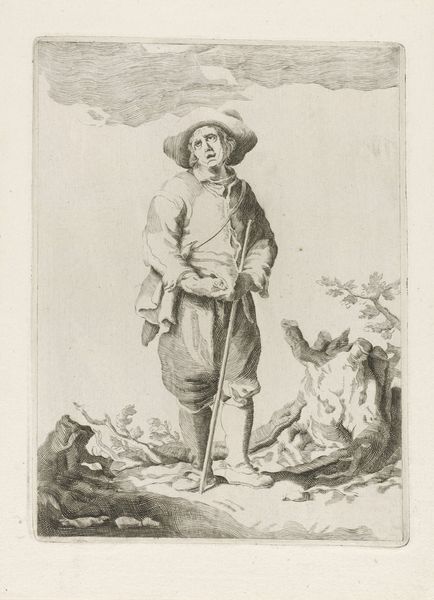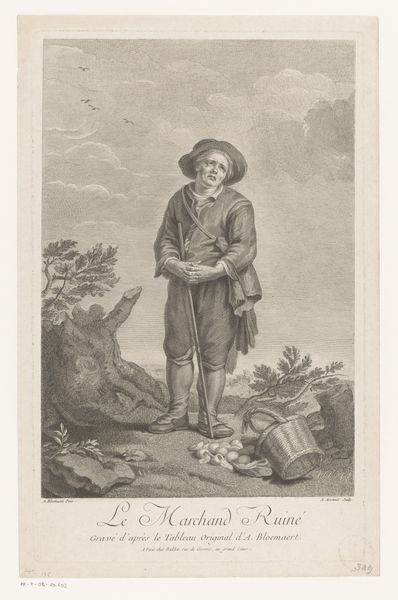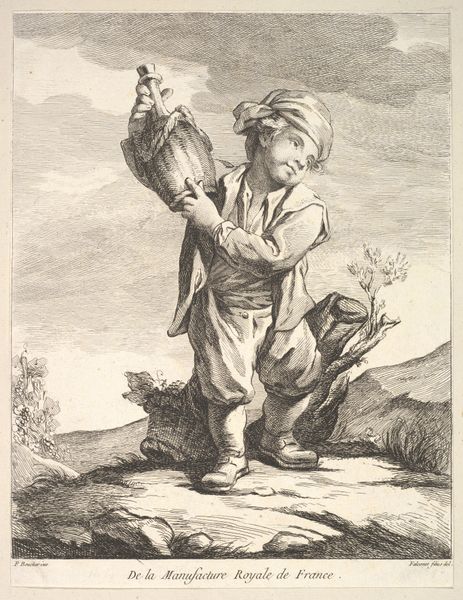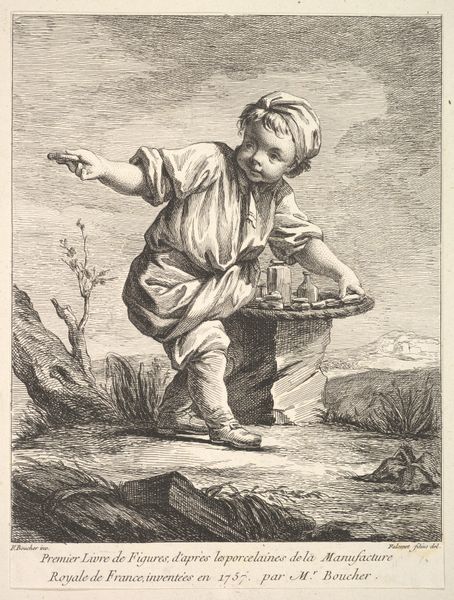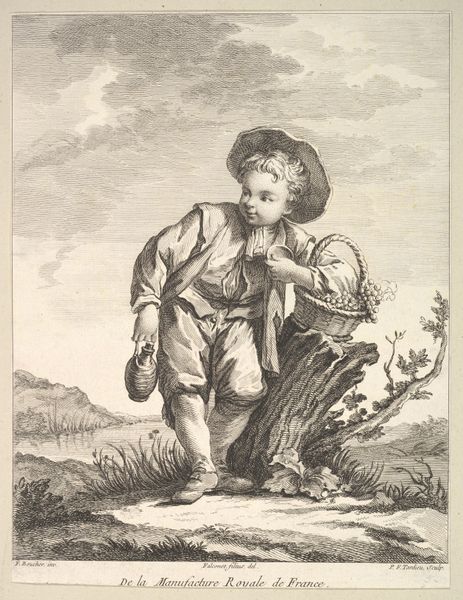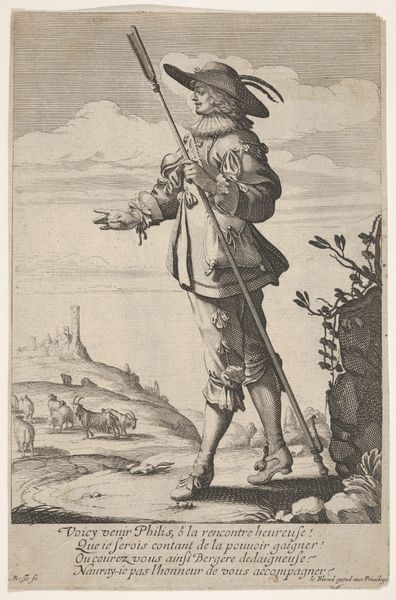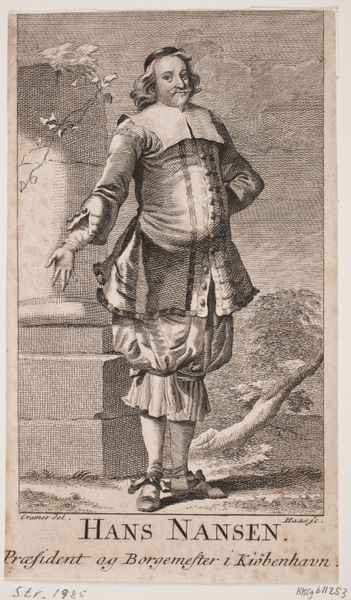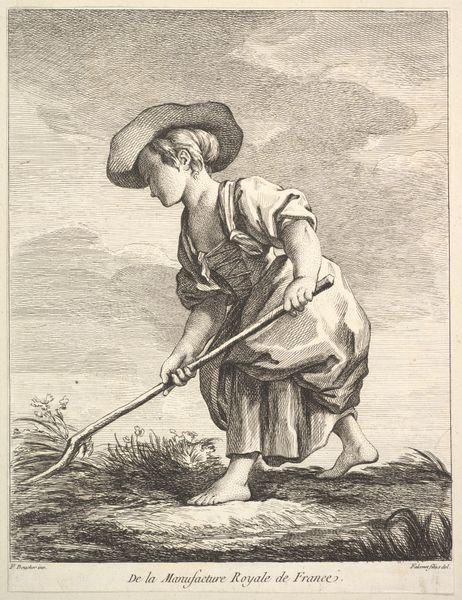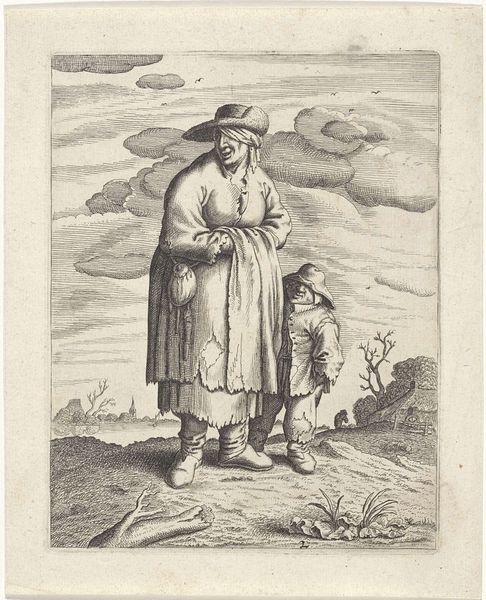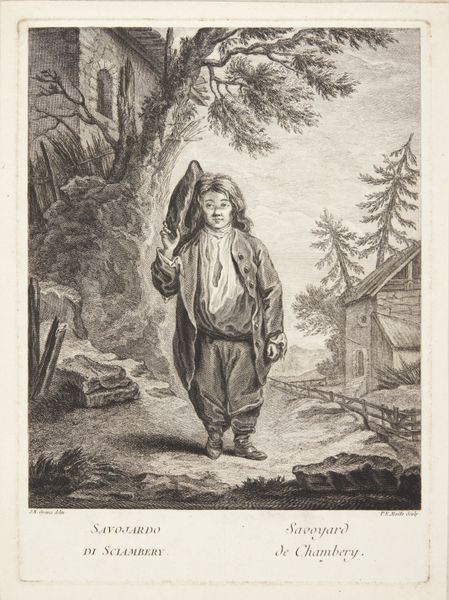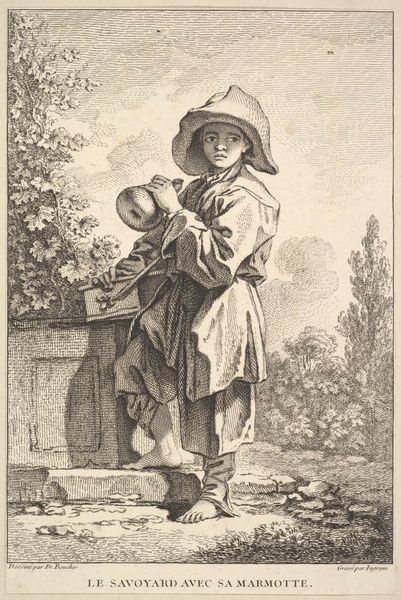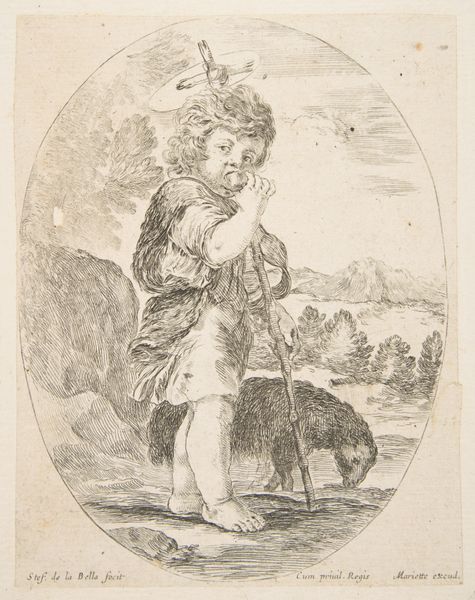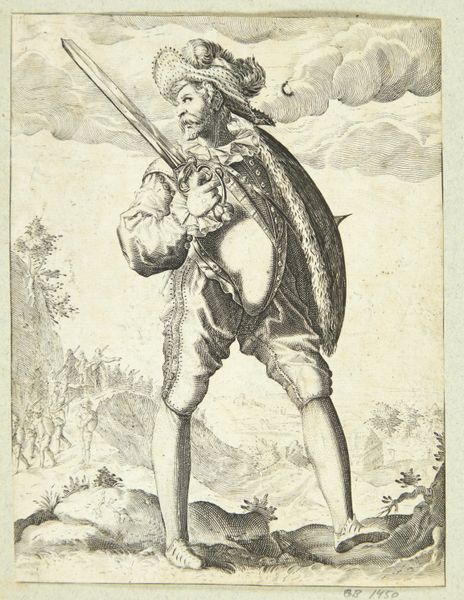
Little boy with a scythe, from Premier Livre de Figures d'après les porcelaines de la Manufacture Royale de France, inventées en 1757, par Mr. Boucher (First Book of Figures after porcelains from the Manufacture Royale de France, devised in 1757, by Mr. Boucher) 1757
0:00
0:00
drawing, print, engraving
#
drawing
#
weapon
# print
#
old engraving style
#
boy
#
figuration
#
genre-painting
#
engraving
#
rococo
Dimensions: Sheet: 9 13/16 x 7 3/8 in. (24.9 x 18.7 cm)
Copyright: Public Domain
This print, "Little boy with a scythe," was created by Pierre Etienne Falconet, likely in the late 18th century. The monochromatic etching captures a robust child, dressed in peasant attire, leaning on a scythe amidst a field. Falconet employs a classical structure. The figure is centrally positioned and idealized, with the landscape serving as a backdrop that both supports and frames the subject. Through the fine lines of the etching, Falconet constructs a semiotic tableau. The child and scythe symbolize innocence entwined with labor, perhaps critiquing or idealizing the pastoral. Consider the period's philosophical undercurrents; the print hints at a Rousseauian return to nature. Falconet, through his formal choices, destabilizes the clear boundaries between childhood, work, and nature, suggesting a complex interplay of these themes within the cultural discourse of his time.
Comments
No comments
Be the first to comment and join the conversation on the ultimate creative platform.
